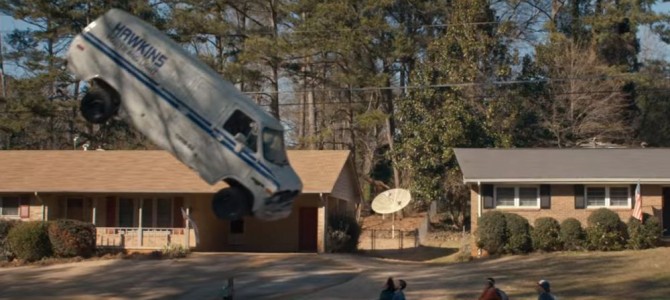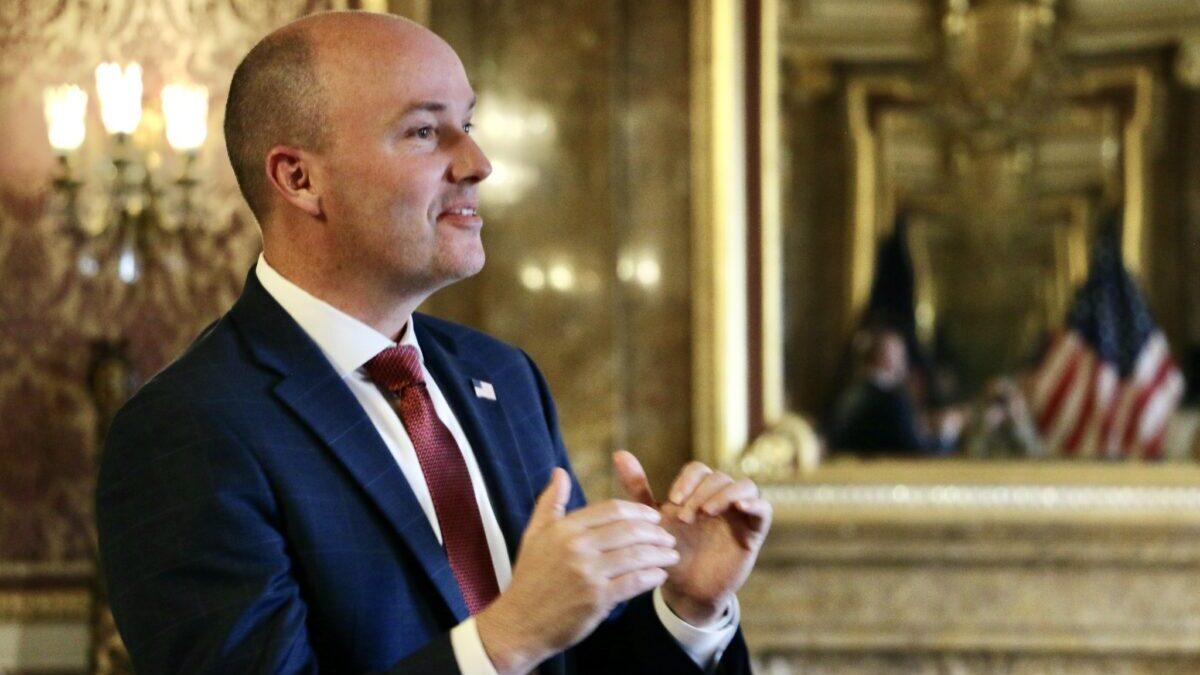
Netflix’s new “Stranger Things” from the Duffer brothers’ creative team skillfully plays with the 1980s genre of kid-centric films. Written with the images of our shared visual filmic language, season one’s eight episodes have the familiarity of scrambled eggs and Sunny D. While the scenario is new, the storytelling devices are recognizable as those from the narratives of ’80s and ’90s youth.
I stayed up late to watch “Stranger Things” just as I once did to watch “Heathers” on HBO. After my parents were asleep, I snuck into the TV room and sat real close in the dark, the volume low so I wouldn’t be found out watching the latter.
Now, after my son is asleep, I again pump down the volume and this time watch all the episodes at once. Every night I would quiver when Winona Ryder of “Heathers” put that cigarette in her mouth outside the school in those last moments, and I still do when in “Stranger Things” she smokes at her Formica table in the kitchen with the fake wood siding.
Where Did Winona Ryder Make that Wrong Turn?
Ryder was the Heather I always wanted to be, the popular girl who knew that everything she represented, the lifestyle she supported, was built on a foundation of vanity and self-importance. After drinking Coke slushies in the Sevies parking lot with the hot and mysterious new kid, Ryder’s character has grown up to be the female lead in John Cougar Mellencamp’s “Jack and Diane.”
Watching her struggle with shift work, raising two boys on her own, all along the aforementioned wood siding, it’s easy to see her Joyce Byers as part of the Winona continuum. From disaffected youth Lydia in “Beetlejuice,” Veronica in “Heathers,” Kim in “Edward Scissorhands,” right to her off-track turn as taxi driver Corky in “Night on Earth,” we can follow her trajectory down the rabbit hole (“Girl Interrupted”) and out again, where she finds herself as a single mom in a lonely, rented house in the woods.
She’s not the perfect mom, or the mom who has all the answers. She’s the mom who fights for every dime, makes as many mistakes as the rest of us, and loves her kids with a fierceness that begets sadness. Ryder is the ’80s mom her characters were never supposed to grow up to be. The trope of ’80s films, which have become their own genre, would tell us she ought to have a fulfilling career, a devastatingly good-looking husband, and a pair of cheerleading overachieving children.
Where she made that wrong turn is almost the meta-question of “Stranger Things.” To her character’s credit, she doesn’t dwell on the choices that brought her to this place, but accepts each obstacle, with her eyes on the ultimate goal. Once a decision is made, she sticks with it.
The Kids Want to Know the Truth
I was a kid in the ’80s, and I thought my parents had all the answers, even when I thought those answers were wrong. There always seemed to be so much more going on than the tired bits of formulaic it’s-alright-ness that came our way. Every time we kids heard “Things will be alright,” we immediately believed the opposite. It was clear adults were keeping things from us, and we couldn’t look to the Internet to uncover the lies, obfuscations, and structured realities that made up our world. We had to look to each other, and to our own experiential discoveries, to figure out what was really going on.
The kids in “Stranger Things” must rely on each other, the knowledge they’ve gained, and the legends of which they are a part for answers about how to grow up, be self-reliant, and navigate not just teenage life but the supernatural dysfunctions of their exurban Indiana town. Each epic bike ride, from the very first moments of the very first episode, brings new mysteries and higher stakes. By comparison, my after-school bike rides to general store Myette’s in my small Massachusetts town, where my biggest misdemeanor was sneaking Gobstoppers before dinner, had nothing on these kids—or the kids from “E.T.” or “Goonies,” for that matter.
What our epic bike rides did have in common was complete independence. Once the kids leave their respective driveways they are, like I was, untrackable. Once I mounted my ten-speed, or my sky-blue Huffy with cloud-patterned banana seat before that, and rolled out of my housing development, there was a grand feeling I was on my own, and it was spectacular.
My curfew was 6 p.m., and if I wasn’t home by then there’d be hell to pay, but there were no phone calls, text messages, or Twitter DMs to usher me back. This was the glory part of growing up in the analog age. From the time we left for school in the morning to whatever time we happened home, we were independent entities, experiencing the world unimpeded by interfering tech.
The kids in “Stranger Things” have that freedom, even as they yearn for more connectivity with ham radio and walkie-talkies. They use the old analog technologies to communicate with each other and the natural world, achieving a dialogue deeper than surface chatter we experience today, each of us faceless and separate, remitting souls via backlit screen.
When the “Dungeons and Dragons”-playing boys in “Stranger Things” need more information, they turn to a personal resource, their science teacher, who can answer the questions they don’t ask as well as those they do, providing a context for their scientific exploration and real-world experimentation that the Internet and its myriad search results cannot match. Being a kid in an analog world means mistakes must be owned, not only on screen and surface, but for life. Social media snafus can be rough for sure, but they’re nothing like the real deal.
What Do Kids Do with Independence? Grow Up
Kid independence is a key trope to the great kid-centric genre films, and “Stranger Things” embraces that fully. We learned from Molly Ringwald, Anthony Michael Hall, Ally Sheedy, Wil Wheaton, and that great heroine of 1990s television, Sarah Michelle Gellar, that at a certain point parents cease to have relevancy in their children’s lives. Parental rules and expectations are insufficient to keep their children safe from the horrible dangers only kids can defeat. As such, the kids need to find their own way.
As the children gain more insight into the world beyond the cul-de-sac, the boundaries parents have set appear arbitrary. Their narrow worldviews of children and adulthood, their reasons and methods for keeping their children safe, pale in comparison to the real, and present danger posed by woodland monsters, conspiracies, and high school bullies alike. Those movies gave us kids courage to believe in our own worth, learn our own lessons, question the fabric of reality as it has been told to us, and to live our lives without asking permission.
There are some fun homages, whether intentional or by happenstance, to the legendary films of my youth. The character Eleven is reminiscent of the title character from “The Legend of Billie Jean,” complete with crew cut and penetrating stare out from under lowered brow. Friendships fall apart when a boy takes up with an outcast girl, a la Blaine and Steph in “Pretty in Pink.”
Long hikes down train tracks harken back to “Stand By Me.” Eleven and Mikey recall Molly Ringwald and Ally Sheedy in “The Breakfast Club” when Molly gives Ally a makeover, and the switch of having the young boy give the young girl the makeup tutorial is endearing and sweet.
With a throwback soundtrack almost matching Nic Harcourt’s genius with “Veronica Mars” and costumes to rival “Freaks and Geeks,” “Stranger Things” sent me back to all the delicious safe parts of my childhood, while adding the freaked-out creepiness we knew existed all around us. It was great to hear Joy Division coming back to major audiences with “Atmosphere” and New Order’s “Elegia,” which was the same track that played after Duckie dissed Andie for getting together with Blaine in “Pretty in Pink.” Echo and the Bunnymen, The Clash, The Bangles, Peter Gabriel, and Modern English are just a few of the artists that dot the ’80s alt-pop score.
I can’t be the only child of the ’80s who’s got her fingers crossed for a rocking montage in season two, with a little kissing in the backseat of the wood-paneled station wagon, Ryder prepping for a righteous rampage, and a crew of smart, outcast boys readying to defeat the dark side.









